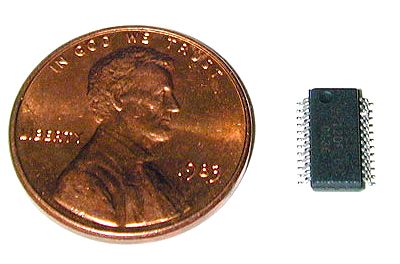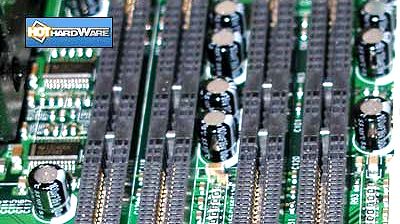Het viel de mensen van Hot Hardware op dat hun favoriete moederbord, de Abit TH7II-RAID met i850 chipset en Socket478, zijn front side bus niet verder liet overklokken dan ongeveer 117MHz, voor het geheugen kuren kreeg. Door de multiplier-lock van de Pentium 4 werd overklokken met dit plankje daarom beperkt tot 17%, wat dus ook meteen betekent dat het moederbord in de toekomst niet in staat zal zijn om te werken met officieel PC1066 geheugen en Pentium 4 processors met een 533MHz FSB. In een artikel laten ze zien hoe ze dit probleem hebben opgelost, namelijk door de RDRAM klokgenerators van Texas Instruments te vervangen voor modellen van hogere kwaliteit. Het resultaat was een 2,4GHz chip die met standaard luchtkoeling rotsvast draaide op een FSB van 123MHz (2,95GHz), en dit alleen beperkt door de processor zelf, niet door het geheugen zoals voorheen:
No matter how hard you look, you can't even see where the solder forms over the pads on the board to make contact with the PCB. This is professional PCB re-work folks and it is the only way to do this modification. If you don't have the experience with a soldering iron, don't even think of attempting it. Also, note the orientation of the chips in this shot. TI designates the "pin 1" location with the grey stripe that is silk screened on the top of the part. This way you know you have the pins facing the right way and on the right pads of the PCB. If you flipped that part around, you might cross your power and ground connections and fry your board but good.



:strip_exif()/i/1000147245.jpg?f=thumbmedium)
:strip_exif()/i/1019768446.jpg?f=thumbmedium)